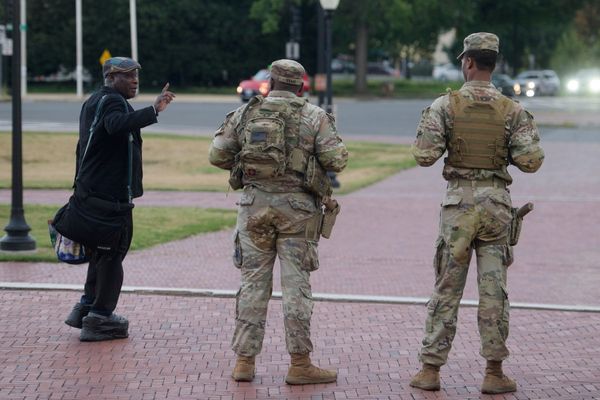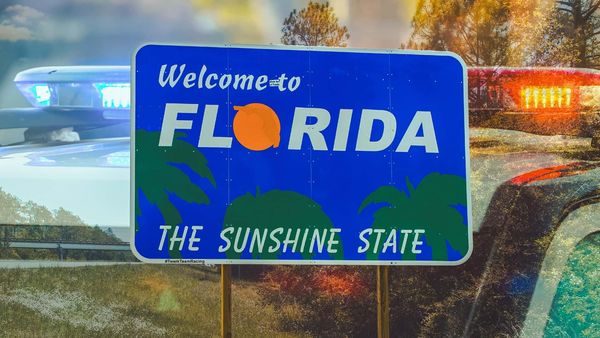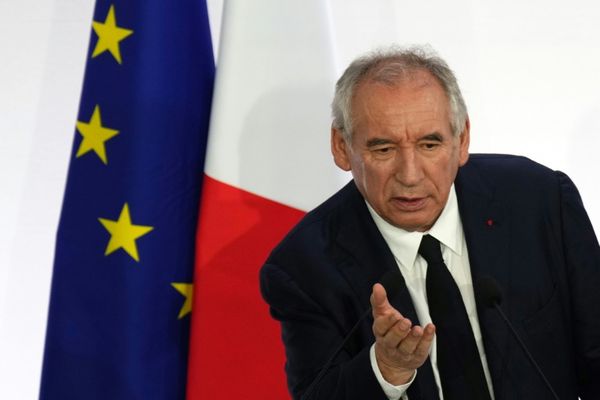
On February 14 2019, then-home affairs minister Peter Dutton told radio shock jock Ray Hadley on 2GB that
from our perspective the most important thing here is to make sure that we get national security right, that we protect our borders. We’ve spoken to the sailors who pulled the kids out of the water, the half-eaten torsos, those people, those sailors, members of Border Force, I mean they’re people still to this very day with PTSD and they’ve never recovered and some never will. The most important thing for us is to make sure that boats don’t start, don’t get back through.
Dutton’s narrative here conveys a sense of Australia as a nation that controls people’s movements because it cares. But while “stopping the boats so the kids don’t drown” has been framed as an act of humanitarian governance, it is deeply harmful. It could also be considered illegal under international law, as turning back boats is refoulement (returning people to places they have fled and where they are in likely danger of persecution). The use of mandatory detention as a deterrence strategy might also be considered illegal, as the government imprisons groups of people arbitrarily and indefinitely.
The story that Dutton is telling is used across party lines. To offer one example: at the 2015 ALP National Conference, Tony Burke — the minister for immigration, multicultural affairs and citizenship from July to September in 2013 — stood up and told the conference that the party should change its policy position to support boat turnbacks because of the children.
In a speech described by ABC News as “passionate and emotional”, during which “some in the audience were moved to tears”, Burke focused on his experience as minister to argue that “Labor needs to be able to turn boats back”. He said that there needed to be a deeper understanding of what it meant to be compassionate in this area of policy. He told the conference that:
the number assigned to my time as immigration minister is 33. I was there for fewer than four months and there are 33 lives that were lost on my watch. When I first got the list — the list was only of ages — but I noticed that one of them was 10 weeks old. And I remember asking my staff to go to the department and get his name.
At this point he took a deep breath. Then he resumed, telling his audience that “the staff came back and said, ‘Oh no, they can’t give you his name, you can’t use it in the media at the moment because the names can change and the details can change.'” Burke raised his voice:
I said, ‘Can you just tell them I don’t want to use it in the media?’ He was 10 weeks old, he died on my watch, I just want to know his name. His name was Abdul Jafari. I was given his name on a Post-it note, and I kept that Post-it note on my desk until we lost office. I kept it there for one very simple reason: we have to show compassion not only to who is in our line of sight, but to everybody who is affected by our policies.
A change in position
The Labor policy was changed. The party, which is now in government, supports boat turnbacks. This position was reinforced by Prime Minister Anthony Albanese during the 2022 federal election campaign, when he asserted in April 2022 that a new Labor government would “turn boats back”.
“I was asked today about boat turnbacks — our position is clear, we continue to support them,” he told reporters.
There are few signs that this position will shift, despite the appointment of Andrew Giles — who led the argument at this same national conference against a policy of boat turnbacks — as minister for immigration, citizenship and multicultural affairs. Giles’s language was clear in 2015: he disagreed with the policy because he was “unconvinced by the effectiveness” of boat turnbacks, which he regarded as an “inherently unsafe” practice that ran “contrary to our international obligations”.
Practically speaking, “stopping the boats” in Australia has variously meant turning boats around at sea, disembarking passengers and transporting them back to their destination port, and taking passengers to immigration prison in Christmas Island, Manus Island and Nauru.
The Manus Island Regional Processing Centre, located in a former Australian navy base, is an immigration prison in Papua New Guinea established by the Howard government in 2001, alongside the immigration prison in Nauru, as part of what was termed the “Pacific Solution”. It was an extension of Australia’s colonial relationships with Papua New Guinea and Nauru. Both sites stopped being used in 2003, and were formally closed by the Rudd government in 2008, but they were reopened by the Gillard government in 2012.
This 2012 move was a result of the recommendations of a report by former chief of the Australian Defence Force Angus Houston, former secretary of the Department of Foreign Affairs and Trade Michael L’Estrange, and CEO of Foundation House Paris Aristotle. This report provided advice to the government as increasing numbers of refugees made their way to Australia by boat.
It resulted in a range of punitive measures being instituted. It was also subject to sustained criticism from human rights groups, academics and some in the media. On July 19 2013, the second Rudd government announced that everyone who had been transferred to Manus Island would never be resettled in Australia. In practice, some people who came on boats after this date were able to live in the Australian community; arbitrary decisions were made as to where people would be sent.
But nearly a decade on, this decision remains in force. While the prison in Manus Island has been closed, the prison in Nauru continues — and was reauthorised by the government in February 2023. Many people continue to languish in Nauru, Papua New Guinea or Australia (some of whom were brought to the Australian mainland under the medevac laws) without options for permanent settlement.
At a hearing of the Australian Human Rights Commission’s 2014 Inquiry into Children in Immigration Detention, Greg Lake — a former department official on Christmas Island, responsible for “preparing the criteria by which people would be selected to go offshore” — testified that in 2012 someone from the office of Chris Bowen, the Labor immigration minister, called him, telling Lake that his “responsibility” was to “select the children that looked the youngest” to send to detention in Manus Island. Lake made clear that the government “wanted to send a deterrent message” so “it was important to send some children”.
Legal scholar Madeline Gleeson explains that children selected for this most punitive form of detention had to be at least seven years old “since doctors had advised that it was not possible to vaccinate children younger than this against the diseases there”. Thus the government was looking for the youngest-looking children who were over seven years old.
A patronising, nation-building narrative
Despite the harms it causes, the narrative that the boats must be stopped has attained normative status across the 21st century. It is a nation-building and racialising story, which works to create the people who stop the boats as saviours who are fundamentally good (and white), and those who are being stopped from being on boats as lacking (and non-white). This narrative rests on an idea that the boats need to be stopped because it is in the children’s best interests to do so.
It seems to assume, patronisingly, that children and their caregivers would not already be acting in the child’s best interests. As sociologist Michelle Peterie has shown, “discourses of compassion are a well-established feature of Australia’s asylum seeker debate” in recent years. These discourses, she says, “have gained traction … because they reconcile Australia’s preferred self-image as a decent country with its underlying insecurities and need for control”.
Pointing us towards a longer history of such manoeuvres, historian Joy Damousi has written of post–World War II efforts to “rescue” Japanese-Australian children, explaining the ways that this “paternalistic” approach was embroiled in a “major perception and investment in a particular image of Australia as a humanitarian nation”. There is a long history of work to create an idea of Australia as “caring”, and this work has always been part of a project of maintaining control.
The discourse around “stop the boats so children don’t drown” sets up politicians, the media and the public as looking out for these children and their best interests in a way that their parents, families and communities do not. It establishes whiteness as responsible and non-whiteness as irresponsible.
We see this consistently in the ways that Australian governments and institutions talk about refugee children. It is also a globalised understanding of children. In 1994, the UN High Commissioner for Refugees (UNHCR), Sadako Ogata, wrote in her preface to the UNHCR Guidelines on the Protection and Care of Refugee Children: “children are vulnerable … children are dependent … children are developing” and “refugee children are children first and foremost, and as children, they need special attention”.
In this formulation, which represents how the United Nations and its Convention on the Rights of the Child conceptualise the child, children “are presumed to lack the competency and capacity to assist in the design and development of any measures or interventions to ensure their effective protection”, as legal scholar John Tobin puts it.
And, indeed, this racialised narrative will be familiar to anyone with knowledge of the Stolen Generations. The idea that non-white parents are not capable of properly parenting their children — and that governments and their bureaucracies know better what is in their best interests — has a long history in Australia. This interlinking continues: refugee policy in Australia is settler-colonial. It is an extension through the remaining traces of White Australia-type policies of the treatment of First Nations families onto other types of families.
This idea that the boats need to be stopped is being actively exported overseas, too, as seen in recent days with UK Prime Minister Rishi Sunak’s invocation of the well-known “Stop the Boats” slogan. But understanding history can help us come to grips with the task ahead in undoing the normalisation of the idea that boats carrying refugees need to be stopped.
This is an edited extract from Cruel Care: A History of Children at Our Borders by Jordana Silverstein (Monash University Publishing)







